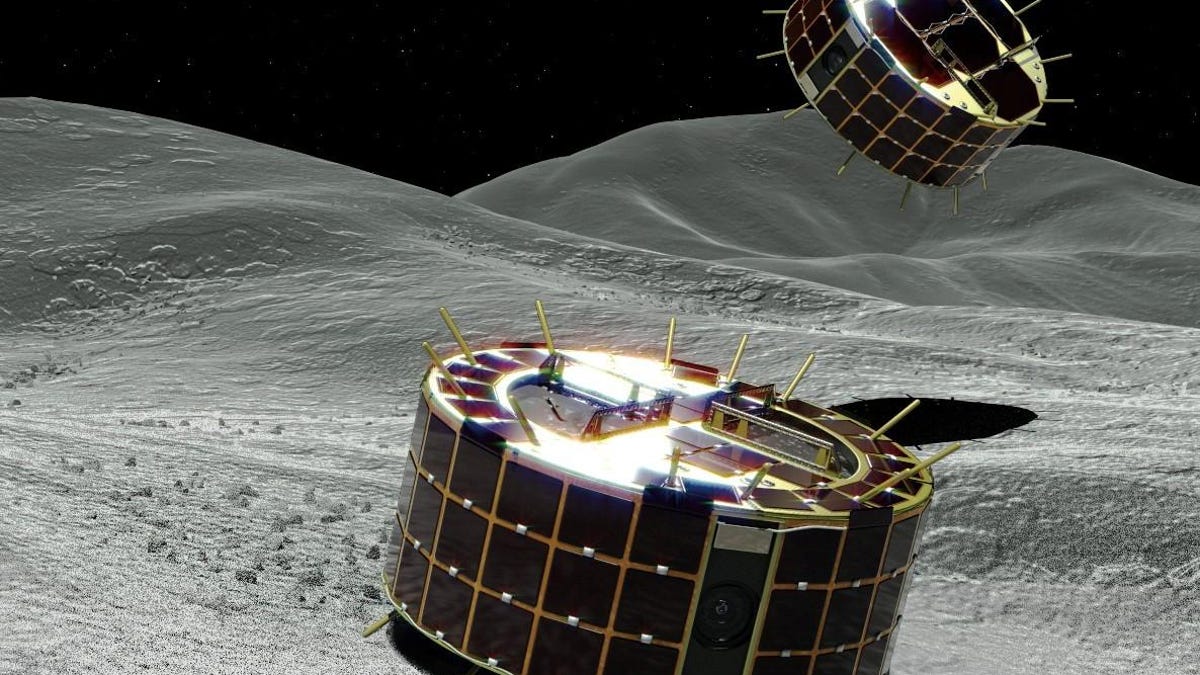Japan's Hayabusa-2 is sending tiny rovers to hop around an asteroid
The JAXA spacecraft is dropping a few emissaries to the surface before moving in itself to swipe a piece of the space rock Ryugu.

Japan's space agency is planning to land a spacecraft on the asteroid Ryugu next month. Before it does, however, the Hayabusa-2 robotic spacecraft will drop a pair of pie-sized rovers to its surface, where they'll hop along the space rock as part of their exploration.
JAXA launched Hayabusa-2 back in 2014 as a follow-up to the original Hayabusa mission that landed on the asteroid Itokawa in 2005. Like its predecessor, the second Hayabusa's goal is to study and sample an asteroid before making the long journey home with the souvenirs it collects.
Hayabusa-2 arrived in the vicinity of Ryugu in June and has been making close passes ever since to help pick out a few good landing sites. Before the main craft itself moves in to take a chunk of Ryugu, however, it's deploying two seven-inch (18 cm) rovers and a small lander to the asteroid's surface.
A look at two Minerva-II rovers and the housing that shields them on board Hayabusa-2.
Starting Thursday, the rovers, dubbed the Minerva-II, will be dropped to the cosmic boulder, which is about a kilometer (.62 miles) across. In addition to hopping, the wheel-shaped rovers will slowly float across the surface of the asteroid because of its fairly weak gravity.
The original Hayabusa carried a lander named Minerva that never made it to the surface of Itokawa due to an error. That rover is probably still floating around deep space somewhere.
[MINERVA-II1] September 19 09:00 JST: Operations for the deployment of the MINERVA-II1 rovers begins today! Currently, ground communication is from Usuda. Preparation for the spacecraft descent will take place today, and from tomorrow the descent will begin. (Hayabusa2 Project)
— HAYABUSA2@JAXA (@haya2e_jaxa) September 19, 2018
The Minerva-II rovers are equipped with cameras to scope out the surface of Ryugu, as well as temperature sensors, an accelerometer, gyroscope and other tools.
Each hop a rover makes could could send it into the atmosphere for roughly a quarter of an hour as it slowly drifts about 15 meters (50 feet) horizontally. All the photos and data collected by the rover will be relayed to Hayabusa-2 and forwarded to mission controllers here on Earth.
Next up, another lander named Mascot will be sent to the surface of the asteroid in October to study it in more detail before Hayabusa-2 itself moves in for an encounter in late October.
Hyabusa-2 will stay near Ryugu until December 2019, before returning to Earth with the samples it collects in December 2020.
Crowd Control: A crowdsourced science fiction novel written by CNET readers.
Solving for XX: The tech industry seeks to overcome outdated ideas about "women in tech."

